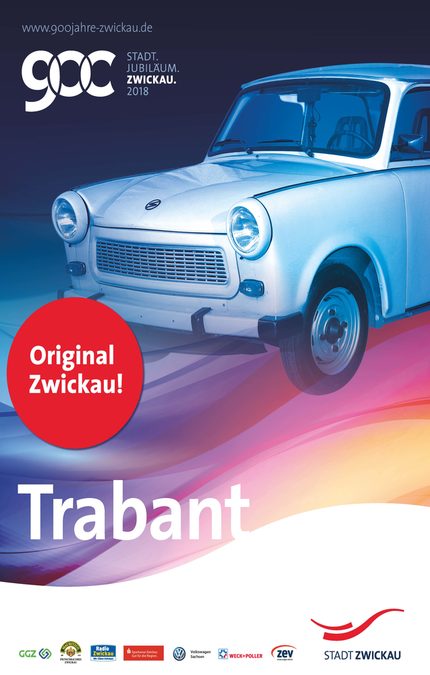After the decline of the GDR, the "career" of the little "Trabi" really took off. The third and most frequently built model, the Trabant P 601, became the symbol of German reunification in 1989/90. Between 1964 and 1991, over 2.8 million vehicles of this type were produced. Besides the Wartburg, the Trabant was the car for the whole GDR family. But what makes this mockingly called "plastic bomber" or more nicely nicknamed "cardboard racer" cult car so special? The Trabant had its première in 1958. The vehicle with front-wheel drive and a spirited two-stroke engine offered space for four people and luggage, was considered affordable and robust, but also uncomfortable and noisy. The unusual mix of materials used for production was particularly noteworthy. Many vehicles were exported to the CSSR, Poland and Hungary. The Trabant was also successful as a rally participant in international competitions in the 1980s. True Zwickau lads will also tell you: Discarded roofs were great for sledding... Which did, however, require some skill.
After the end of production, the little Zwickau automobile became a much admired legend on four wheels worldwide. Even today, the lovingly called "Trabi" or "Trabbi" mass vehicle of the GDR still has friends and fan clubs all over the world, who meet regularly and present their models with sometimes crazy conversions to a larger audience. The extremely interesting Trabant history and the legends surrounding the cult car reflect the shortage in the GDR, but also the urge for innovation and the inventiveness of the Zwickau car manufacturers. The VW group recognised this potential, decided on the Zwickau production site and opened up clear perspectives for Saxon car manufacturing. Today, Volkswagen Saxony is the largest employer in the city and the region.
The entire automotive success story, combined with major brand names such as Horch, Audi, DKW, Trabant and Volkswagen, can be experienced first-hand in the August Horch Museum in Audistraße 7. The foundation for this was laid by the resourceful automotive pioneer, engineer August Horch, in 1904, when he decided on the Zwickau production site.


